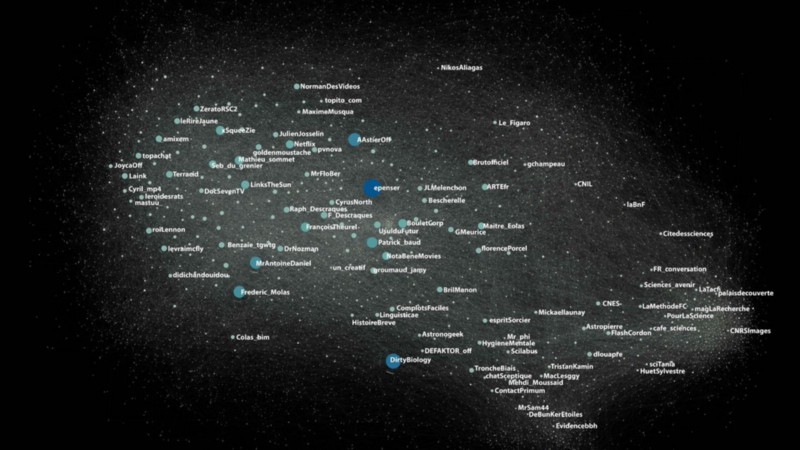When communication is conflated with “sales pitch”, this is problematic.

Hi, Kevin here!
I recently came across an interesting article called “The one critical skill most designers overlook”, written by Alastair Simpson from the Atlassian design, and I wanted to give a quick reaction to it.
The one critical skill most designers overlook
Most designers spend a ton of time learning about the latest design tools. Or debating the latest and greatest…medium.com
The author develops the idea that, as designers, we are probably not spending enough time on our communication skills. He goes on by saying that “communication skills can make or break any design projects that you working on”.
I think we can agree with this statement. I mean, communication is indeed an inherent and important part of our work.
Now, what is interesting here is the development he makes from this statement. Because he is presenting us with an approach to communication that I would qualify as “presentation skills”. He is, from his own words, conflating sales and presentation techniques with communication in the general & commonly shared meaning of the term: exchanging with others — and I think what we really mean here is a “mutually beneficial and meaningful exchange”.
And I have a real problem with the underlying proposition that communication IS selling ideas. When he explains in the “set the stage” section that what is important is to “match the audience’s expectations” or, later on, that you “have to engage your team” by “creating awareness”, it feels like you never had all of this at the beginning, which I think is problematic. Worse, when he proposes to use “psychology” to create a sense of urgency on what you’re selling to them, this is (unintentionally) sending a bad message of potential meaningless manipulations, selfish interests, and hegemonic/elitist position from the designer in a collaborative environment.
I mean, most of these make sense only when you are in a situation where you don’t work with the people you’re trying to convince, but you did some work outside and then try to bring it back in the project — and that they are defensive toward your role. In this situation people are surely not aligned: they did not participate in your process, they know nothing about what you did, why you did it, and what it can bring to what you’re all trying to achieve.
Let me ask this:
If people already care about what you’re doing, why wouldn’t they actively listen to you?If they know about what you did & why you did it, why wouldn’t they feel the urgency or importance already?
Learning from systems, networks, and complexity

If you are a designer in a company or a freelancer working for companies, you need to understand how “communication” works — you know the one definition we commonly share.
Communication is an emergent property of a system. To simplify, this means that what we call “communication” is in fact some aspects of the relationships between the agents of the system, that we can incorporate into a larger concept of “culture”. “Good communication”, “trust”, “psychological safety”, etc. are results of the system’s behavior as a whole, not intrinsic qualities of the individuals.
Therefore it is important to note that communication is context-dependent. This is one of the reasons that “good communication” cannot be applied systematically from a framework. It has to evolve from the system, the context, through a set of (simple) rules between the agents — and here I’m only speaking of tacit rules, but you can add explicit ones and it becomes more complex.
“The medium is the message” –Marshall McLuhan
So, trying to sell something that happens outside of a context is by definition hard, because you have to bring back enough of the original context to help people make sense of what you’re saying.
Consequentially, this means that communication cannot be reduced to a well designed & purposefully created pitch that comes out of your mouth, directed to an audience’s hears. And adding slides won’t change anything: people are not machines whose brain endlessly receive & stock information.
On a basic level, our brain seeks patterns and tries to make sense of them through surrounding information and past experiences. The newer the information, the more cognitive-load increases, especially if the context as well is different. This helps fixate partial but relevant information (and this is why learning by doing can be so effective). The selection is based on past (but most of the time recent) experiences and informs situational judgement. This process is very much close to a learning process and this is why emotions play a big role here.
By the way, this is something that the author indirectly points out when he proposes to use psychological tricks to make people care about what you’re selling. Those tricks, like social proof or loss aversion, basically trigger strong negative emotions that are known to play a powerful role in our decision-making process.
So, I think we could say that my disagreement with the author’s proposition is not because it is wrong, but because he equivocates communication with presentation and sales pitch.
Changing the interactions, not the people
The author’s proposition is very much focusing on endogenous factors or in other words, the internal properties of an individual. What social & systems sciences have shown is that this is a common misconception and an outdated way of seeing communication.
As designers, we should understand that what matters here are the interactions, not the individuals. By changing the interactions, and therefore the relationships between the agents of the system (aka the people), you can change how the system behaves, in a non-linear, exponential way. So how to use this knowledge?
One thing I try to do is to embed others in the design process as much as I can. When I have ideas I try to co-create a maximum with them, when I do user testing sessions I invite them as observers, etc. This changes their relationship with us, with what we do and how we do it. I also try to make them actors of the process, by enabling them to lead or co-lead workshops, interview sessions, and other activities.
I’m not saying that I’m always good at this, but I try to consistently do it and welcome when others do the same. For them and me, this is a learning experience. And when we have to make difficult decisions, we have prior experiences & shared understanding.
Okay, obviously you cannot involve everyone in everything you do, but by including key people, those who can share and incentives others, into key moments of your process, you can then just bridge the gap in between by letting them know what you are doing & what are the outcomes.
Conclusion
Now, clearly what I’m proposing here is not incompatible with what Alastair is talking about in his article. Indeed, this doesn’t mean that you don’t have to sell anything at some point to someone who may be external to this process or the development of the product/service. But when it occurs, you then have shared trust and actionable knowledge among a diversity of people that can support, speaks about, and “sell” what you’re doing.
So, to wrap it up, I will rephrase my original point by saying that I agree with most of the author’s proposition if only limited to a narrow definition of communication. And this where I think he made a bad job of defining what he meant by “communication skills”, to the point of equivocating it with at least two other definitions.
Anyway, I hope you find this article useful.
Thanks for reading!













Discussion